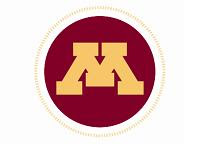Job title: Senior Lab Services Coordinator
Number of years with the college: 10
Where you work: Biology Program, St. Paul Labs
Describe something interesting or unusual about your work here:
I work with the animal behavior teaching lab and get to work with a lot of fish, insects, and other arthropods. I came back after winter break to find one of the wolf spiders had had babies while I was gone. She was carrying a teaming mass of little spiderlings on her back!
What’s the oddest thing someone has left behind in a lab?
Someone once lost a small diamond from an earring. She contacted me and gave a very good description of where she had been working when she thought she may have lost it. I went to look and it was right where she had thought it would be. She was very happy about that.
How do you get to work?
If there is no snow and ice I ride my bike. When the roads are too treacherous I grab a ride with my husband to the East Bank and catch the first Campus Connector bus to St. Paul.




